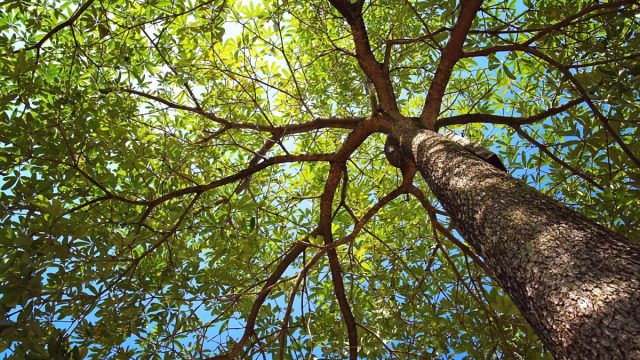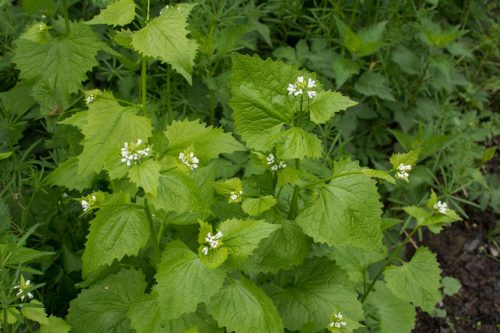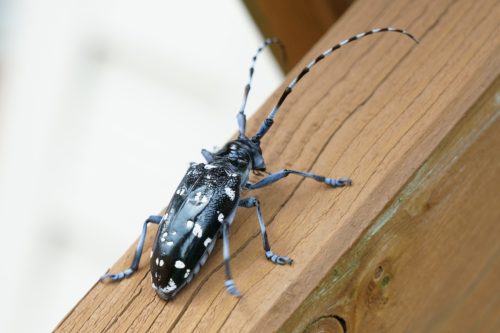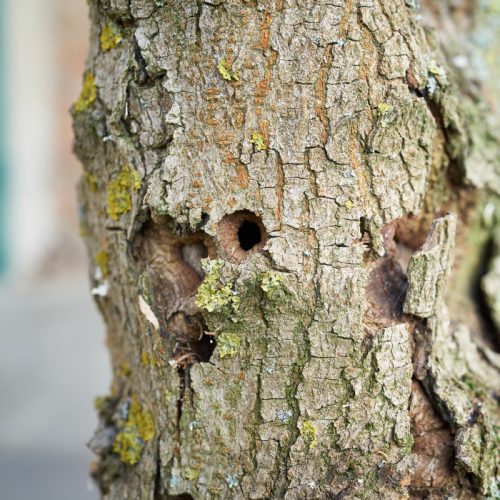If You Notice This on Your Trees, Report It Immediately, USDA Warns
It could be an indication that your trees are at risk, and that danger could spread.

With all of the hard work we put into maintaining our yards and gardens, it's always frustrating when something goes awry. Whether it's wilting flower petals or pests eating your vegetables, you'll want to take action as soon as possible to prevent the issue from getting worse. Generally speaking, the earlier you catch these problems, the better. With that in mind, you'll want to pay extra attention to your trees, which could be showing you signs that something is amiss. Read on to find out which tree symptom experts say you need to report immediately.
READ THIS NEXT: If You Have This Tree in Your Yard, Cut It Down Now, Officials Warn.
Invasive species are a significant threat to biodiversity.

Invasive species pose a threat to surrounding wildlife, and as they are not native to the U.S., they can disrupt ecosystems and create much larger problems. Earlier this year, experts called for gardeners to pull out any garlic mustard, which is classified by the U.S. Department of Agriculture (USDA) as a "terrestrial invasive." This plant sprouts earlier than others around it and is then able to commandeer natural resources. It also blocks sunlight from other species and releases a chemical that kills integral underground fungi. But not all invasive species put down roots, and another kind of invader could be harming your trees.
READ THIS NEXT: If You See This Flower in Your Yard, Call Local Officials Immediately.
Holes in your hardwood trees could be a sign of something more serious.

If you notice perfectly round holes in the bark of your hardwoods, they might be playing host to a dangerous insect—the Asian Longhorned Beetle. The USDA classifies this bug as an invasive pest, posing the greatest threat to American hardwood trees. In fact, the agency warns that it could cause more damage to national forests and backyard trees than Dutch elm disease, chestnut blight, and gypsy moths combined.
According to Charles van Rees, PhD, conservation scientist, naturalist, and founder of the Gulo in Nature blog, this beetle has no native predators in the U.S., and domestic hardwood trees do not have any natural defenses. With no one to eat adult Asian Longhorned Beetles or their larvae, their populations easily multiply.
"As a result, our native forests, upon which both we and wildlife depend, become a smorgasbord that gets rapidly devoured," van Rees said. "The damage that their larvae do while feeding on the inner bark and heartwood of hardwood trees usually kills them."
The distinctive holes are how the beetles emerge from trees.

The punctures in the bark of your trees are actually the beetles' exit holes, according to the USDA, and they will be perfectly round and pencil-sized.
"This is where the larvae emerge once they have changed into adult beetles. Piles of fine sawdust around the base of trees is a good sign that the larvae are working within," van Rees said. He added that rounded depressions, also known as "wounds," are left by adult females when they bite into the tree bark to lay eggs. This will then leak sap, which is another telltale sign that your trees are in trouble.
RELATED: For more up-to-date information, sign up for our daily newsletter.
The beetle itself has a distinct look you can spot.

According to the USDA, the Asian Longhorned Beetle is a threat to elm, birch, poplar, and other varieties of hardwoods, currently affecting areas in Massachusetts, New York, and Ohio. While this beetle has not yet been detected in Western states, all U.S. states are thought to be at risk, the agency says. Entomologists believe that the larvae originally arrived in the U.S. via wood products or crates from East Asia and then grew into adults in the states.
While the most obvious signs of the beetles are the larvae in your trees, you can also recognize the beetle itself, as it is quite distinct. They are anywhere between .75 and 1.5 inches in length, and have "bullet-shaped" shiny black bodies with white spots and long striped antennae. Van Rees pointed out that the beetles are also commonly referred to as "starry sky."
Pay attention to your trees if they seem stressed, van Rees said, which you will notice if leaves start falling off or changing from a green color to yellow.
"Keep a close eye on how 'perky' and alive your trees look as the spring progresses," he noted. "This time of year, they should be getting greener and healthier looking all the time."
You will need to contact local agencies or the USDA if you spot these signs.

According to Nicholas Martin, entomologist and founder and editor-in-chief of Pest Control Hacks, the Asian Longhorned Beetle is not dangerous to you or your pets, but your trees could be in considerable danger. So, if you notice any signs of an infestation, van Rees recommends contacting your local wildlife or natural resources agency, or the USDA Animal and Plant Health Inspection Service (APHIS) office, immediately.
"They will absolutely want to know that the beetle has shown up on your property, as they are very carefully tracking the spread and progress of these species," van Rees said. "Phone apps like EDDMapS are an easy way to notify them, but if you want specific advice on what to do, it is best to call or e-mail an office."
You can reach the APHIS hotline for the Asian Longhorned Beetle at 1-866-702-9938 or report signs or symptoms of an infestation online. The agency also recommends sourcing firewood locally whenever possible, and not moving it, as beetles can survive hidden in these logs at any stage of life.
READ THIS NEXT: The No. 1 Sign There's a Snake in Your Yard, Experts Say.





















